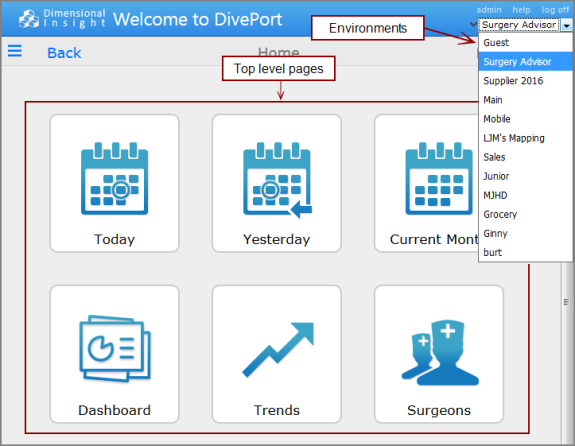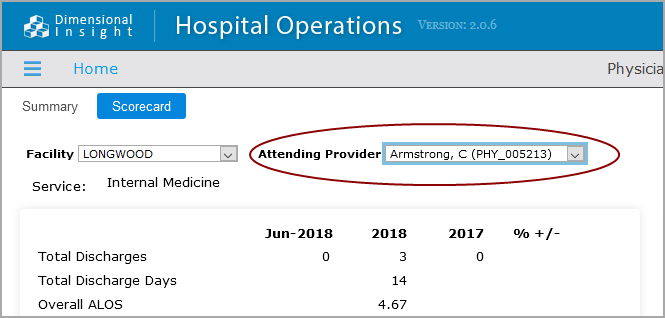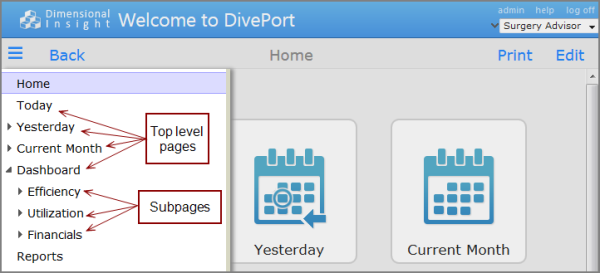A DivePort portal is created using environments and pages.

An environment is a collection of pages that share the same settings. After content is added, each environment can display top level pages.
Pages can contain unlimited levels of subpages, creating a parent/child hierarchy. The simplified interface can present hierarchy in a SideBar ![]() tree view.
tree view.
User access settings can be set on individual pages or the access can be inherited from the parent page.
Environments and pages can be developed, moved, copied, organized, and reorganized as the portal develops, and objectives and user requests evolve. Page navigation is completely changeable. You are not locked into the initial parent/child page relationships.
Ultimately, pages are used to display portlet instances that contain the data content. Portlets support the use of click actions that can display additional content.
You can use the keyboard arrow keys to navigate the dialog boxes and menus or the Tab key to navigate the SideBar or move from one toolbar item to the next.
You can activate menu items by pressing Enter or Space.
In DivePort 7.1(23), ARIA role='link' has been added to each menu item in the menu portlet.
The interface indicates keyboard focus, by drawing a blue border around the focused element. Press the Tab key to advance the focus to the next element.

